Couverture Chocolate
-


Premium 55% Dark Couverture Chocolate
OliveNation
$15.99Semi Sweet Dark Chocolate Melting Chips for All-Purpose Baking, Pastry, Decorating, Confections53% Minimum Cocoa Solids with 34.5% Total Fat ContentSmall Round Wafers with Semi-Sweet Chocolate Flavor & AromaExcellent All-Around Chocolate for Cakes,...$15.99 -

Callebaut 811 Dark Callets 54.5%
Callebaut
$20.99Callebaut 811 54.5% Dark Chocolate Callets for Baking, Confectionery, FountainsGourmet Semi Sweet Belgian Chocolate from Callebaut54.5% Cocoa Solids, including 36.6% Cocoa ButterDeep Color and Rich, Full Flavor with Medium FluidityPerfect for Melting,...$20.99 -
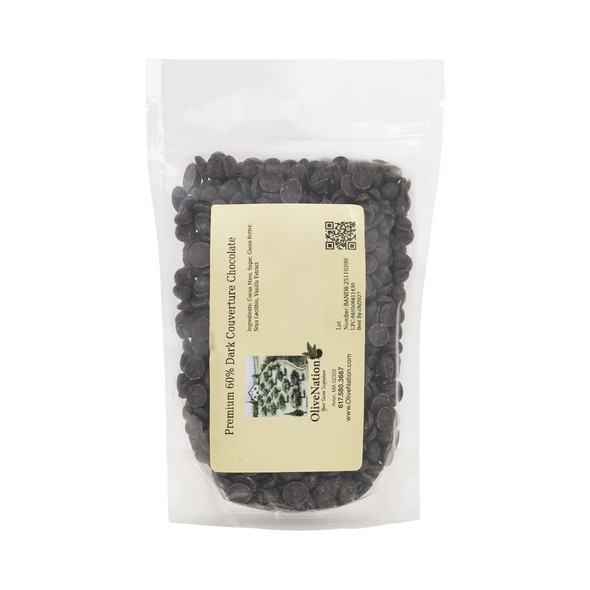

Premium 60% Dark Couverture Chocolate
OliveNation
$15.99Dark Chocolate Melting Chips - European-Style Professional-Quality Wafers58% Minimum Cocoa Solids with Bittersweet Chocolate Flavor & AromaSmall Round Wafers for Easy Melting & MeasuringThin Fluidity for Coating, Molding, Candy, Confectionery, Truffles,...$15.99 -


Premium 64% Dark Couverture Chocolate
OliveNation
$16.99Dark Bittersweet Chocolate Melting Chips - European-Style Professional-Quality Couverture64% Minimum Cocoa Solids with Deep Bittersweet Chocolate Flavor & AromaSmall Round Wafers for Easy Melting & WeighingHigh Fluidity for Coating, Molding, Candy,...$16.99 -


Premium Milk Couverture Chocolate
OliveNation
$15.99Milk Chocolate Melting Chips for All-Purpose Baking, Pastry, Decorating, Confections37% Minimum Cocoa Solids with 38% Total Fat ContentSmall Round Wafers with Sweet Milk Chocolate Flavor & Aroma with Hints of CaramelExcellent All-Around Chocolate for...$15.99 -


Callebaut 823 33.6% Milk Chocolate Callets
Callebaut
$22.99Callebaut 823 33% Milk Chocolate for Baking, Snacking, Ganache, FillingsPremium Belgian Milk Chocolate from Callebaut36.2% Fat Content with 33.6% Min Cocoa Solids, 20.8% Milk SolidsSmall Round Wafer Shape for Even, Fast MeltingNon-GMO, Gluten...$22.99 -


45% Dark Chocolate Chunks, Small
OliveNation
$14.99Small Dark Chocolate Chunks - Semi Sweet Couverture with Large Dark Chocolate Chunks - 45% Cocoa SolidsIrregular Shaped Couverture Bits approximately 8mmChocolate Mass, Cocoa Butter, Sugar, Vanilla Flavoring, Sunflower LecithinPerfect for Baking,...$14.99 -

Valrhona Equitoriale Noire 55% Dark Chocolate Feves
Valrhona
$23.99Valrhona Equatoriale 4661 55% Dark Chocolate Valrhona Equatoriale 55% Dark Semi-Sweet Chocolate Feves are excellent All-Purpose baking chocolates. Valrhona Equatoriale 4661 55% Dark Chocolate is a covering chocolate that is renowned for its balanced...$23.99 -

Callebaut 60-40-38 Dark Chocolate Callets
Callebaut
$21.99Callebaut 60% Dark Chocolate - Couverture Baking Chips with Rich, Dark TastePremium Dark Bittersweet Belgian Chocolate from Callebaut40% Cocoa Butter Content for Smooth Texture & Medium FluiditySmall Round Callets are Easy to Measure & MeltGreat for...$21.99 -


Valrhona Manjari Grands Crus 64% Dark Chocolate Feves
Valrhona
$28.99Valrhona Manjari 64% Dark Chocolate Valrhona Manjari Grands Crus 64% Dark Chocolate Feves is an extraordinary bittersweet couverture chocolate made from a blend of the best Trinitarios cocoa beans from Madagascar. With a 64% cocoa content (with 35%...$28.99 -
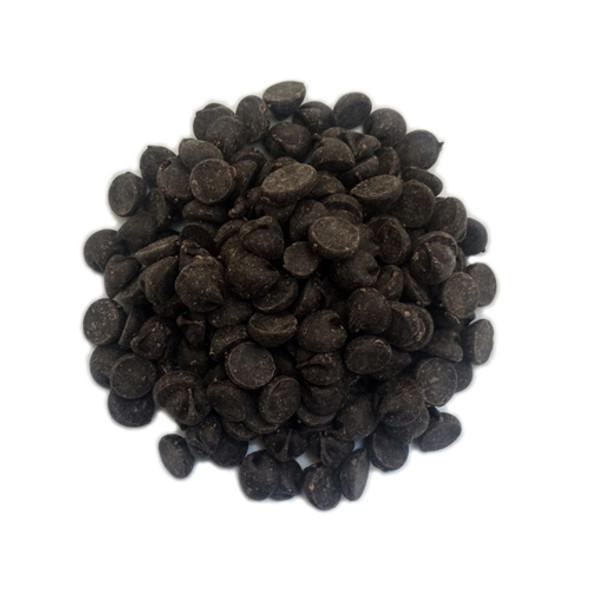
Callebaut 70-30-38 Dark Chocolate Callets
Callebaut
$21.99Callebaut 7030 70.4% Dark Bittersweet Chocolate Callebaut 70-30-38 Dark Chocolate Callets contains 70% cocoa. Ranked with a fluidity level of 3 (out of 5), this is an excellent general-purpose chocolate. Callebaut 7030 70.4% Dark Bittersweet Chocolate...$21.99 -

Valrhona Guanaja Grands Crus 72% Dark Chocolate Feves
Valrhona
$29.99Valrhona Guanaja 70% Dark Chocolate Valrhona Guanaja Grands Crus 72% Dark Chocolate Feves is a masterful blend of criollo and Trintario that reveal a whole aromatic and complex range of fruits, coffee, molasses and floral notes. The chocolate feve...$29.99 -


Valrhona Araguani Grands Crus 72% Dark Chocolate Feves
Valrhona
$32.99Valrhona Araguani 72% Dark Chocolate Valrhona Araguani Grands Crus 72% Dark Chocolate Feves is an extraordinary bittersweet couverture chocolate made from a blend of the best Criollo and Trinitario cocoa beans from Venezuela. With a 72% cocoa content,...$32.99 -
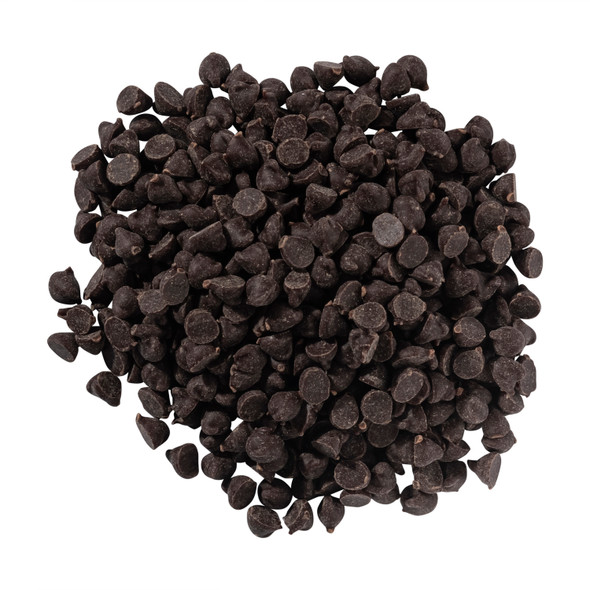

Barry Callebaut Dark Chocolate Mini Chips 10M
Barry Callebaut
$10.99Barry Callebaut Semi Sweet Dark Chocolate Mini Chips 10MRich Couverture with 44.9% Cocoa Solids & 25.4% FatIntense Deep Flavor & Aroma with Roasted Fruity Undertone & Hint of SweetnessTiny (10M per Pound) Size Morsels for Baking, Decorating,...$10.99 -


Barry Callebaut 70128 Semi Sweet Dark Chocolate Chips
Barry Callebaut
$15.99Barry Callebaut Semi-Sweet Dark Chocolate Chips You deserve the best. Barry Callebaut gourmet semisweet chips are to regular chocolate chips what caviar is to tuna fish. You will never go back to those "other" chips. Always keep a bag...$15.99 -

Barry Callebaut Sugar Free Dark Chocolate Chips
Barry Callebaut
$18.99Sugar Free Dark Chocolate Chips - Healthy 4M Mini Chips from Barry Callebaut ChocolatierMade from Unsweetened Chocolate, Cocoa Butter, Milk Powder, Natural Vanilla FlavorSweetened with Maltitol for Delicious FlavorBake Safe Morsels for Cookies, Cakes,...$18.99 -


Callebaut Dark Chocolate Flakes
Callebaut
$13.99Dark Chocolate Flakes for Edible Decoration, Finishing Garnish, Baking, ToppingSmall, Irregular Shape Shards of Premium Dark Belgian ChocolateAdds Elegant Look, Texture & Rich Semi Sweet Flavor to DessertsPerfect for Topping Desserts, Pastries, Ice...$13.99 -

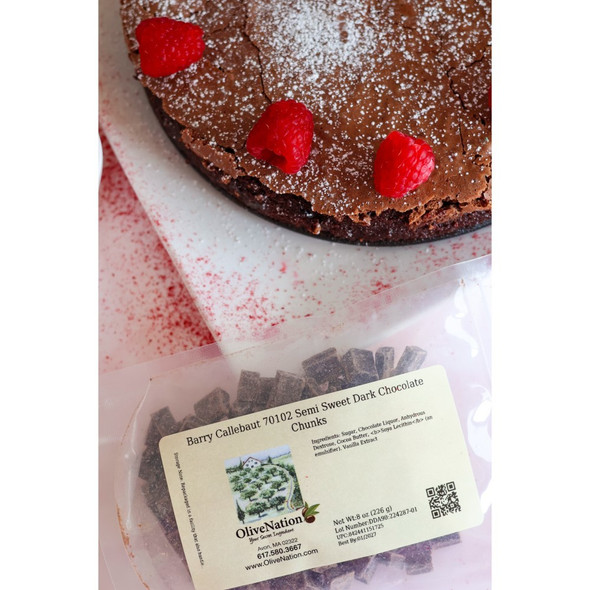
Barry Callebaut 70102 Semi Sweet Dark Chocolate Chunks
Barry Callebaut
$15.99Barry Callebaut Semi Sweet Dark Chunks - Premium Chocolate Couverture Morsels for Baking, Decorating, ConfectioneryPremium Quality Dark Couverture with a Hint of SweetnessSmall, Irregular-Shaped Square MorselsIdeal for Molding, Enrobing, Baked Goods,...$15.99 -

Semisweet Chocolate Mini Baking Chips
OliveNation
$15.99Semisweet Mini Chocolate Chips by OliveNation are delicious, versatile, and perfect for baking. We love their rich and smooth flavor. Choose Semisweet Mini Chocolate Chips over regular-sized chips to get more chocolate taste per bite. You can also use...$15.99 -

Cacao Barry 44% Dark Chocolate Sticks (8 cm)
Cacao Barry
$18.99Chocolate Batons - Bittersweet Couverture Batons with 44% Cocoa SolidsSlender 8cm Solid Chocolate Rods for Pain au Chocolat & CroissantsLightly Sweetened Rich Dark Couverture with 44% Cocoa ButterBake Stable Batons for Pastries, Breads, ConfectionsGreat...$18.99 -


Callebaut Gold Chocolate Callets
Callebaut
$22.99Callebaut Gold Chocolate Callets - White Chocolate with Caramelized FlavorPremium Belgian Couverture with Unique Caramel Taste & AromaPale Amber-Colored Melting DropsPerfect for Enrobing, Dipping, Molding, ConfectioneryDelicious in Creams, Mousse,...$22.99 -

Valrhona Satilia Feve 35% Milk
Valrhona
$20.99Valrhona Satilia Feve 35% Milk Chocolate Feves (Wafers) Valrhona Satilia Feve 35% Milk Chocolate is couverture coating chocolate. Craft delicious bonbons and more with these easy-to-melt discs. Valrhona Satilia Milk Chocolate tastes chocolaty with a...$20.99 -


Valrhona Jivara Grands Crus 40% Cacao Milk Chocolate Feves
Valrhona
$26.99Valrhona Jivara 4658 40% Milk Chocolate Valrhona Jivara Grands Crus 40% Cacao Milk Chocolate Feves are premium gourmet chocolate for baking. Jivara means "the cream of cocoa." This Valrhona Jivara 4658 40% Milk Chocolate Grand Cru...$26.99 -

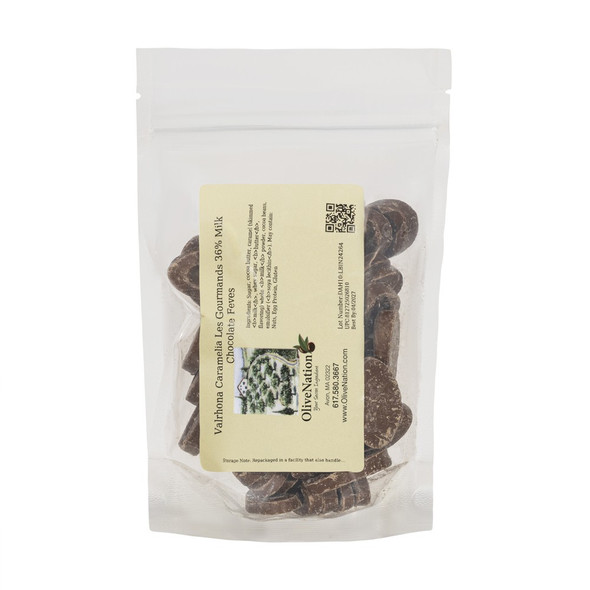
Valrhona Caramelia Les Gourmands 36% Milk Chocolate Feves
Valrhona
$30.99Valrhona Caramelia Milk Chocolate Valrhona Caramelia Les Gourmands 36% Milk Chocolate Feves is a particularly silky smooth milk chocolate that maintains a clear cocoa note woven together with vibrant hints of caramel. Unlike caramel-flavored milk...$30.99 -

Valrhona Inspiration Passion Fruit Couverture
Valrhona
$37.99Valrhona Passion Fruit Inspiration – Fruit-Based Couverture Chocolate for Baking & ConfectioneryPassion Fruit Flavor Chocolate from All Natural IngredientsDelicious Tangy, Sweet Flavor & Aroma, Creamy Texture, Bold ColorOval Feves Perfect for...$37.99 -

Valrhona Inspiration Raspberry Fruit Couverture
Valrhona
$40.99Valrhona Raspberry Fruit Couverture - Disks for Baking & Candy MakingPremium Fruit Couverture from Natural IngredientsAdds Intense Color and Creamy, Sweet and Tart Taste of RaspberriesIdeal for Molding, Mousse, Ice Creams & Sorbets, Cream Mix &...$40.99 -

Callebaut Couverture Ruby Chocolate
Callebaut
$22.99Ruby Chocolate Chips - Callebaut RB1 Ruby Callets for Baking & ConfectioneryNatural Color from Ruby Cacao Beans - No Artificial ColorsMade with Premium Quality Ingredients for Creamy TextureUnique Flavor with Fruity, Sour, Berry-Like Notes & Hint of...$22.99 -

Valrhona Inspiration Strawberry Fruit Couverture
Valrhona
$39.99Valrhona Inspiration Strawberry for Commercial & Home Baking & Candy MakingFruit Couverture Chocolate with Intense Red Color & Taste of StrawberriesCreamy Texture with Delicious Aroma & Flavor for Baking & ConfectioneryIdeal for Making Frosting, Ganache,...$39.99 -

Barry Callebaut Semi Sweet Vegan Chocolate Chips
Barry Callebaut
$18.99Vegan Dark Chocolate Chips - Semi Sweet Dairy Free Morsels from Barry Callebaut4M Mini Size Morsels made from Cocoa Butter, Unsweetened Chocolate & Cane SugarBake-Safe Bits with Delicious, Rich Chocolate Taste & Creamy, Melty TexturePerfect for Creating...$18.99 -

Callebaut W2 White Callets 28%
Callebaut
$24.99Callebaut W2 28% White Chocolate Callets for Confections, Baked Goods, CreamsPremium Belgian White Chocolate from Callebaut for All-Around Use28% Cocoa Solids & 35.8% Cocoa Butter Content for Smooth Texture & Medium Fluidity (3-Drop)Delicious, Creamy...$24.99 -

Valrhona Ivoire Les Gourmands 35% White Chocolate Feves
Valrhona
$31.99Valrhona Ivoire 4660 35% White Chocolate Valrhona Ivoire Les Gourmands 35% White Chocolate Feves for baking and chocolate work. The Valrhona Ivoire 4660 35% White Chocolate is a lightly sweetened white chocolate made with real cocoa butter. With...$31.99 -


Valrhona Dulcey Les Gourmands 35% Blond Chocolate Feves
Valrhona
$32.99Valrhona Dulcey Blond - Fantastic Creamy Baking Couverture Valrhona Dulcey Les Gourmands 35% Blond Chocolate Feves are a unique blond colored baking chocolate from Valrhona that stands out for its creamy texture and a delicious taste that is not too...$32.99 -

Barry Callebaut White Chocolate Chips
Barry Callebaut
$19.99White Chocolate Chips - Ultimate White 1000ct Belgian Baking Morsels from Barry CallebautMade Using Cocoa Butter, Whole & Skim Milk Powder & Vanilla ExtractUltimate formula offers Creamy Texture with Sweet, Rich Flavor & AromaIdeal for Melting,...$19.99 -
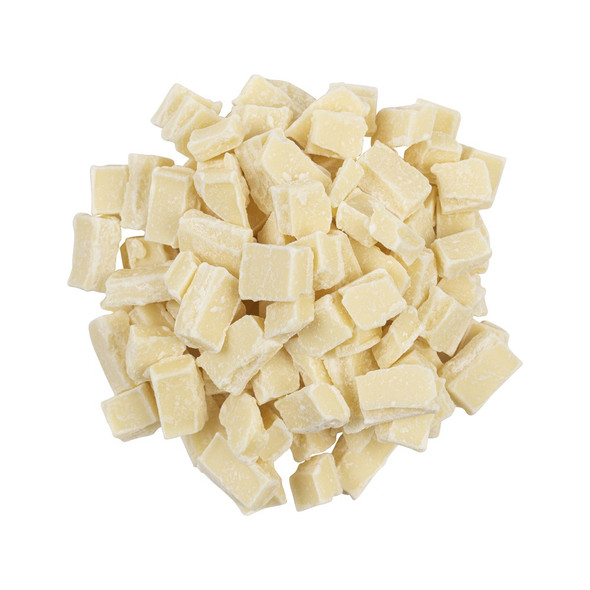
Barry Callebaut White Chocolate Chunks
Barry Callebaut
$16.99Barry Callebaut White Couverture Chunks for Candy Making & BakingCreamy White Chocolate from Cocoa Butter and Milk SolidsPerfect Size for Baked Goods and MeltingDelicious in Cakes, Cookies, Blondies & MoreIdeal for Dipping, Enrobing, and Molding Barry...$16.99
Professional Quality Couverture for Baking, Patisserie, Confectionery Applications
Couverture is a form of pure chocolate used by professional pastry chefs and chocolatiers. Known for creating a beautifully glossy shining finish and distinctive snap, this chocolate contains a minimum of 32 percent cocoa butter, which allows it to flow more easily when it's melted and tempered. Because of the higher cocoa butter content, couverture is considered a higher-quality chocolate that is engineered for enrobing, molding, and dipping in addition to bakery applications. Professional pastry shops, bakeries, restaurants, and caterers use this ingredient to create pastries, baked goods, confections, molded candy, dipped fruits or treats, enrobed products, and beautiful edible decorations. Both dark and milk chocolate couvertures are available, as well as unique ingredients like Ruby Couverture and Fruit Couvertures. White couverture contains a high percentage of cocoa butter, but because it doesn't contain cocoa, it is technically not chocolate at all.What is the difference between good and great chocolate?
Most professional chocolatiers consider that what makes a great chocolate is the amount of cocoa solids (cocoa butter) present. Cocoa butter is what makes chocolate melt in your mouth and provides its distinctive smooth texture and flavor. Cocoa butter content also determines whether the chocolate needs to be tempered for maximum snap and shine. The percentage should be a minimum of over 45 percent for dark chocolate and 30 percent for milk chocolate. Truly great chocolates have cocoa solids over 70 percent. Great chocolate should contain no more than 6 or so ingredients on the label and clearly indicate the percentage of cocoa solids (cocoa butter). Solids is the key term since some companies will advertise 70 percent cocoa, but this can include cocoa powder. Chocolate made from other fats is called compound chocolate or confectionery coating, does not melt in the mouth, and sometimes has a waxy feel.
Tempering Chocolate
What is tempering?
Because melted chocolate is a liquid and hardened chocolate has a crystaline structure, tempering is a process that ensures crystal formation is stable. Stable crystals give chocolate a smooth, silky texture, a crisp "snap" when hardened, and will have a glossy, shining finish rather than a dull greyish bloom.
How to temper couverture:
The basic process involves melting, then cooling, then raising the temperature again for achieve perfect crystal structure. Different types of chocolate require different temperature ranges for tempering. When possible, always follow manufacturer instructions for tempering specific couvertures. The following are general tempering instructions for couverture:
- Fill a pot or the bottom section of a double boiler 1/8 to 1/4 full with water. Bring to a gentle simmer.
-
Place couverture chips or chunks into heat-safe bowl or top section of double boiler and place on top of pot of water, stirring frequently until chocolate is melted and reaches a temperature of:
- Dark Chocolate: 115 to 120°F
- Milk Chocolate: 115 to 117°F
- White Chocolate: 115 to 117°F
-
When chocolate temperature reaches the desired temperature, remove the bowl from the heat, dry the bottom of the bowl, and begin the essential stage of cooling and agitating. Cool until chocolate temperature reaches 83°F.
- One way of cooling the melted chocolate, known as "seeding," is to add chopped, un-melted couverture (about a third of the total amount) to the bowl then stir vigorously until chocolate is melted.
- Many pastry chefs use a method called "tabling" to temper chocolate, a cooling-and-agitating method that involves pouring two-thirds of the melted chocolate onto a marble slab. The chocolatier quickly spreads it thin with a metal spatula, scrapes it back into a pile with a putty knife, and spreads it thin again, repeating until the right consistency and temperature are reached. This cooled chocolate is then stirred into the bowl of reserved warm chocolate.
- Another method for rapid cooling is to dip the bowl of chocolate into a bowl of cold water and a few ice cubes at 10 second intervals, stirring in between, until chocolate reaches desired temperature.
-
When chocolate temperature reaches 83°F, replace on simmering pot or double boiler and re-heat until chocolate temperature reaches:
- Dark Chocolate: 88 to 90°F
- Milk Chocolate: 86 to 88°F
- White Chocolate: 82 to 84°F
- Make sure to wipe away any condensation from bottom of bowl before pouring out chocolate. The chocolate can now be used for molding, coating, drizzling, and dipping.
Troubleshooting tempering:
The two most common problems of working with chocolate are separation and seizing. Separation happens when you get the chocolate too hot too quickly. Many people get impatient and make the mistake of turning up the temperature too high in order to speed up the process. When chocolate gets too hot, the cocoa butter separates from the solids, and there is no way to salvage it, although it remains fine for baking and will taste fine in brownies or other baked goods. The best way to avoid separation is to use gentle heat and stir frequently.
Seizing occurs when moisture is introduced to melted chocolate. The addition of moisture transforms smooth, liquid chocolate into a lumpy, grainy mess. Even the tiniest amount of liquid — a single drop of water, the moisture clinging to a strawberry, or the steam from a double boiler — will cause this kind reaction. Siezed chocolate can be "rescued" for use as ganache or filling by gradually adding a small amount of warmed liquid (cream or fat) to the chocolate until the consistency is smooth again.

